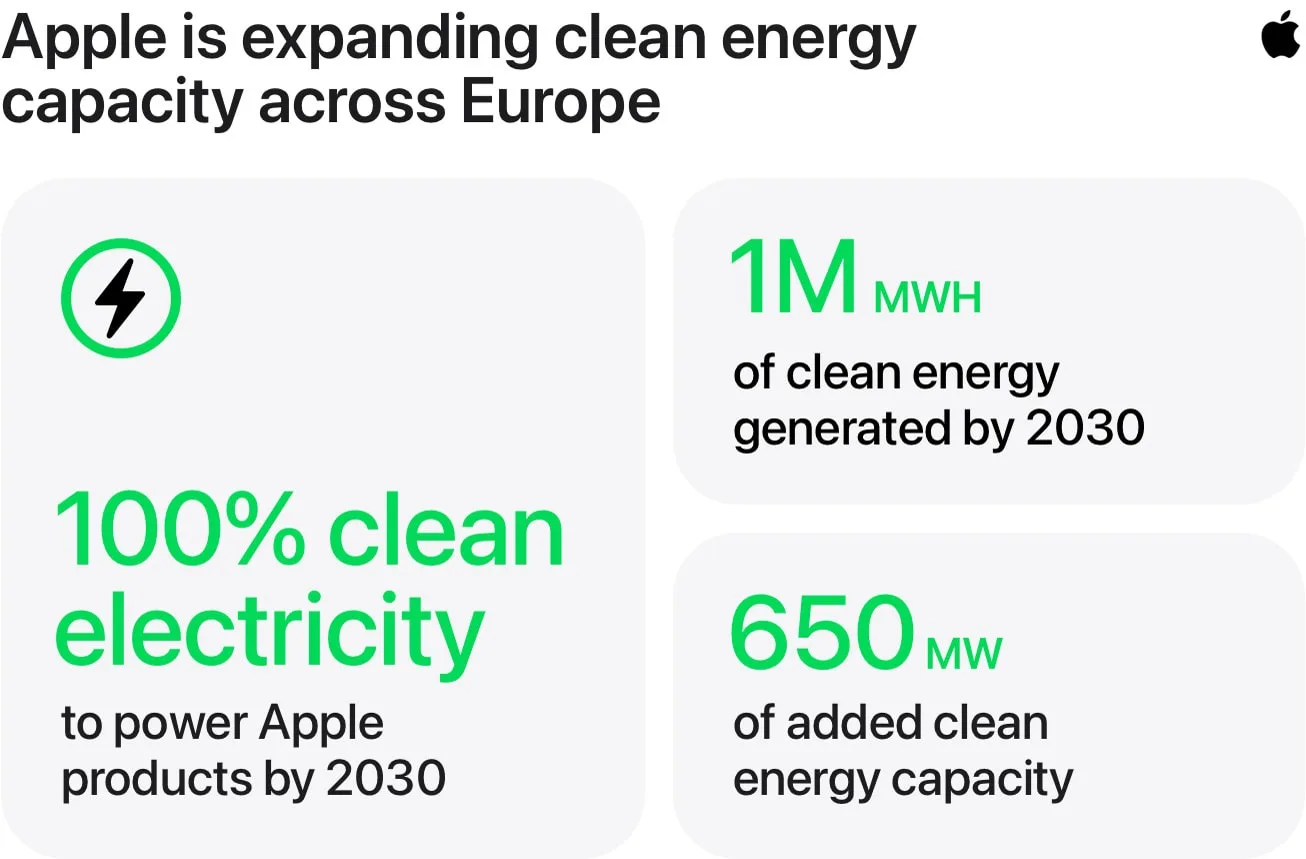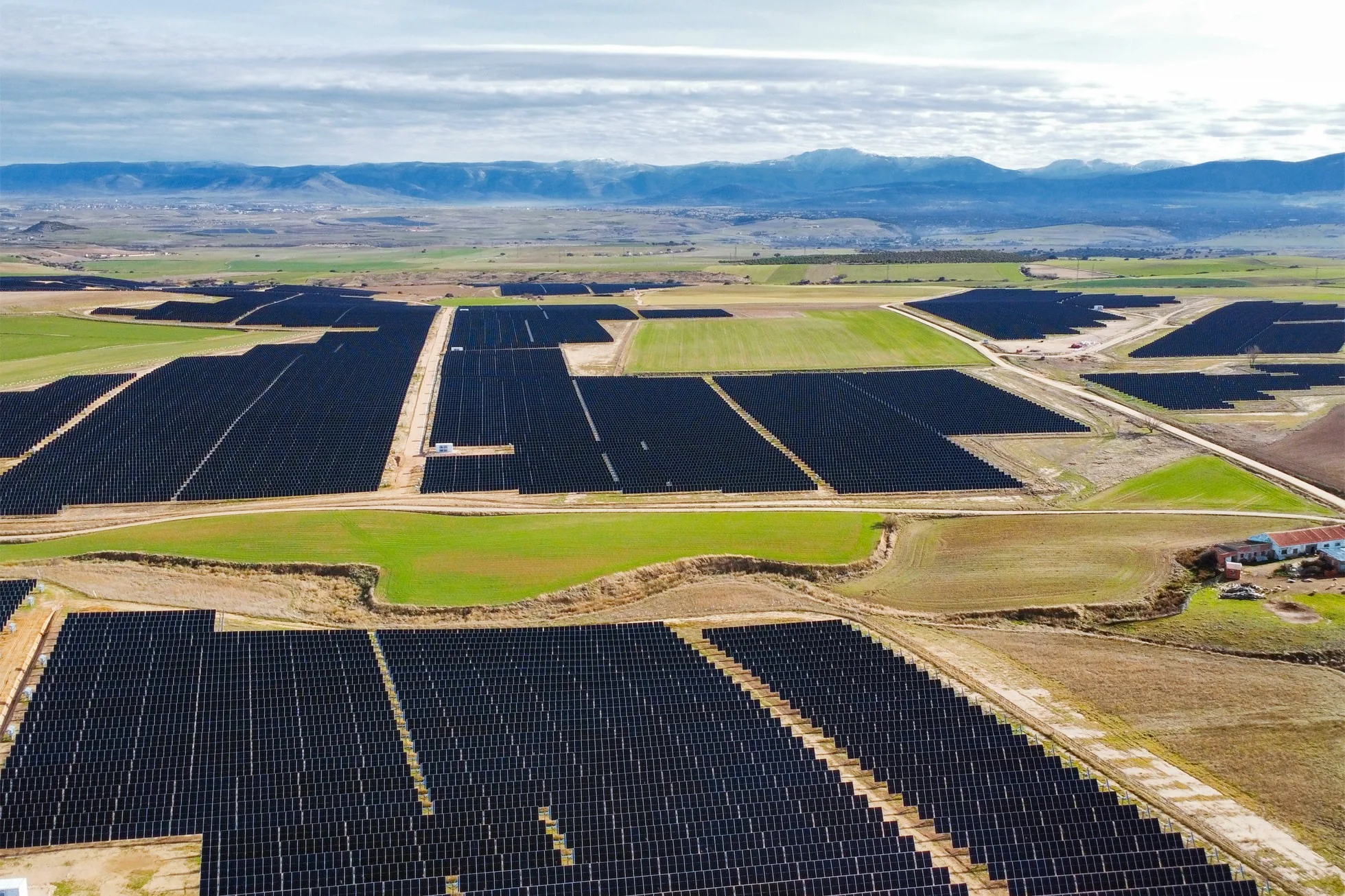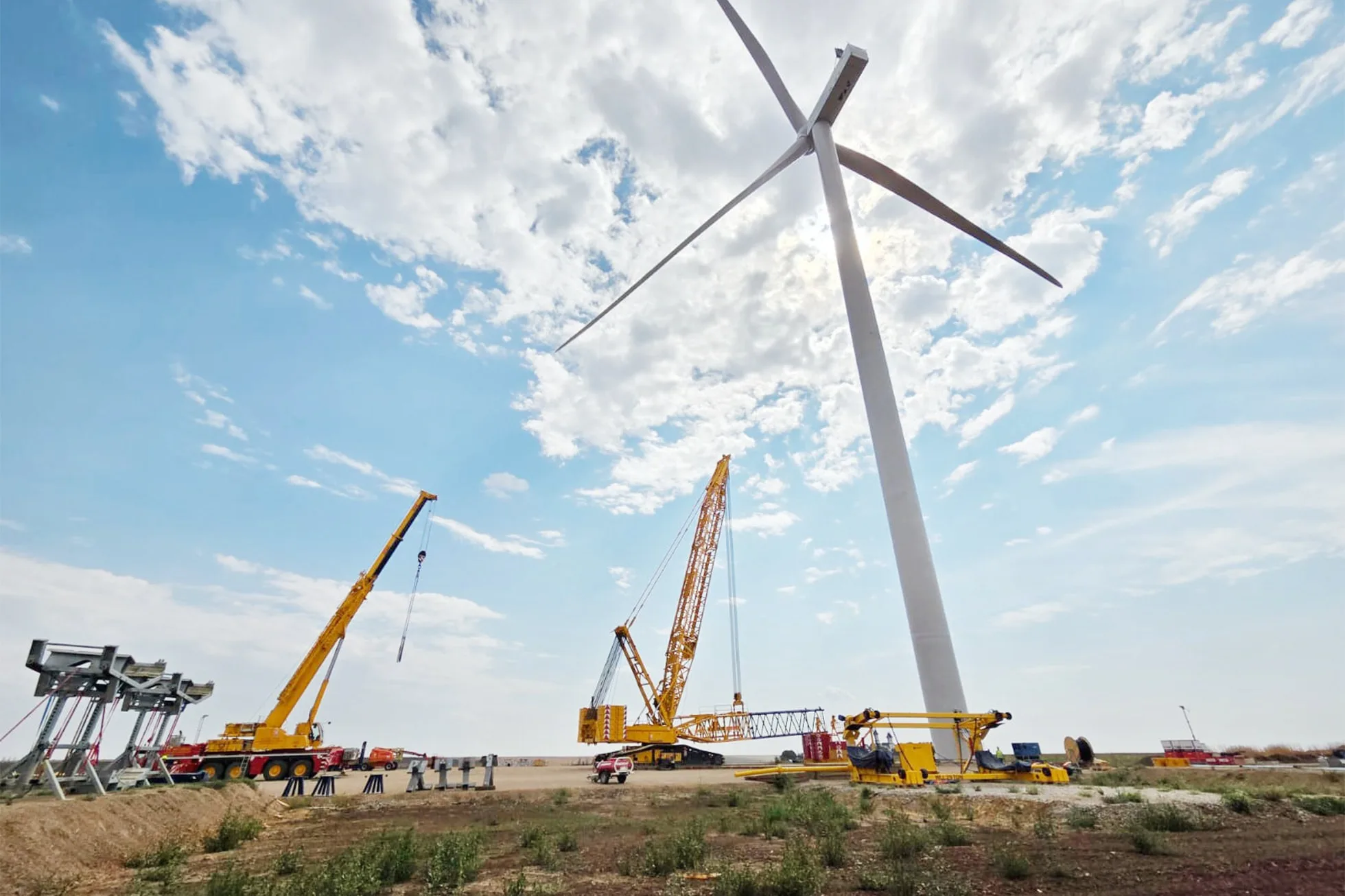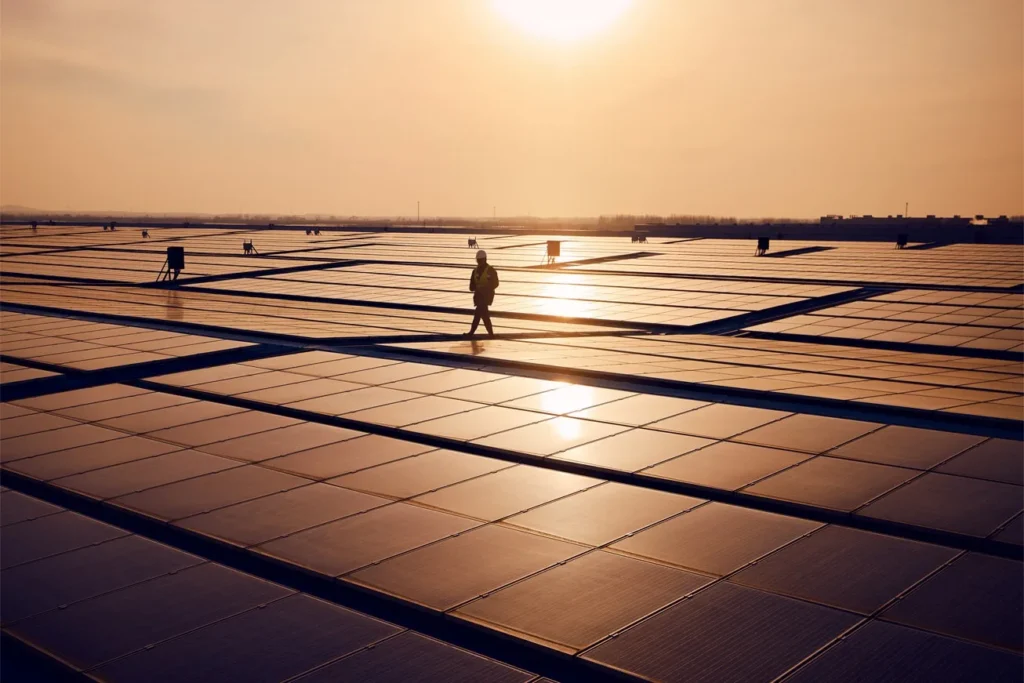Apple signs 650 megawatts of renewable energy in Europe to offset iPhone consumption
On Tuesday, Apple announced that it has signed new contracts for 650 megawatts of renewable energy in Europe, combining wind and solar projects that are either operational or under development.
A significant portion of this energy will be used to offset the consumption of Apple devices — from Mac Pros to Apple Watches — a category that accounts for nearly one-third of the brand’s total carbon footprint.
Solar Projects Across Europe
While Europe is not known for its sunny weather, Apple has secured several major contracts in the region:
- 110 MW of solar energy in Greece,
- an additional 110 MW in Latvia,
- 131 MW in Spain,
- and 40 MW in Poland.
For wind energy, the company plans 99 MW in Romania, along with a stake in a mixed solar-wind portfolio of 129 MW in Italy. These agreements will enable Apple to power its European operations and contribute to the local development of green infrastructure.

150 Million Dollars Invested to Green Production in China
In parallel, Apple announced a $150 million investment in China to assist its suppliers in switching to renewable energy.
According to the company, over 90% of its production and manufacturing in the country is already powered by green sources.

A More Discreet Communication Than Usual
Interestingly, this announcement was only published on Apple’s regional websites in Europe and Asia, but not on the company’s U.S. press site.
This is a notable departure from the past when Apple typically disseminated such announcements globally — a choice that may reflect a desire to remain low-key on energy issues in the United States, which have previously been politically charged.

A Global Race for Green Energy
In doing so, Apple joins Microsoft and Meta, two other tech giants particularly active in this sector:
- Meta has added over 2 gigawatts of solar capacity this year,
- Microsoft has signed contracts for an additional 1.5 gigawatts.
Beyond enhancing their eco-friendly image, these investments also address economic considerations: solar and wind energy have become some of the cheapest sources of energy available, surpassing coal and gas. When combined with large-capacity batteries, whose costs are declining, they provide stable and continuous production.
Moreover, rapid construction timelines — often less than 18 months — make these projects particularly attractive for companies looking to swiftly secure energy for their data centers and AI-related operations.




